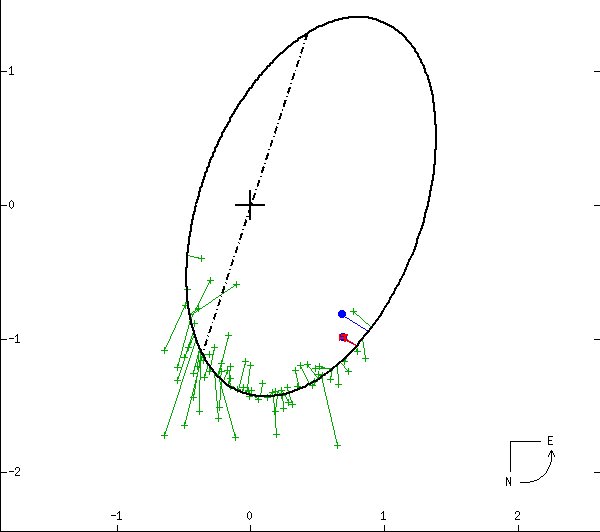
 |
The 194-year orbit of the blue double Beta Muscae (in which the fainter of the two is graphed as if it is going about the brighter rather than about the center of mass) has been only partially mapped (the scale in seconds of arc). Moreover, the closeness of the pair, just a second of arc or so apart, makes observation itself quite difficult, as can be seen in the scatter of the measures. The average separation from the best-fit orbit is 101 Astronomical Units, but from the masses of the stars and the period (see below) is probably more like 80. The orbit will be improved with time and continued observation. The primary star is offset from the focus of the apparent ellipse because of the 37 degree tilt of the orbit to the plane of the sky. (From the Sixth Catalog of Orbits of Visual Binary Stars, W. I. Hartkopf and B. D. Mason, US Naval Observatory Double Star Catalog, 2006.) |